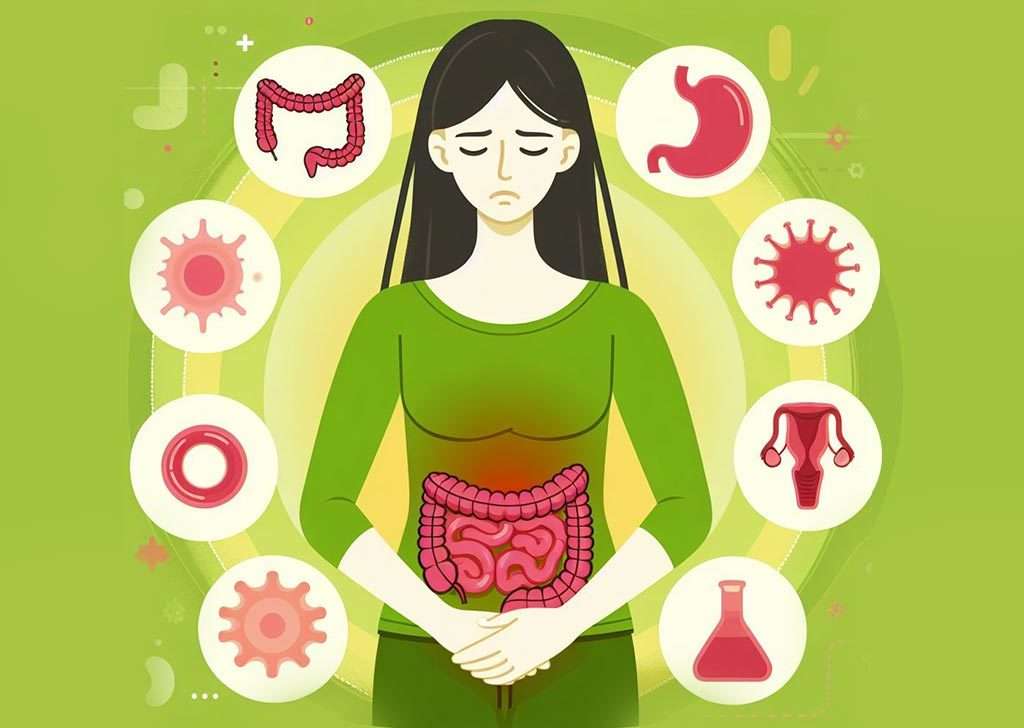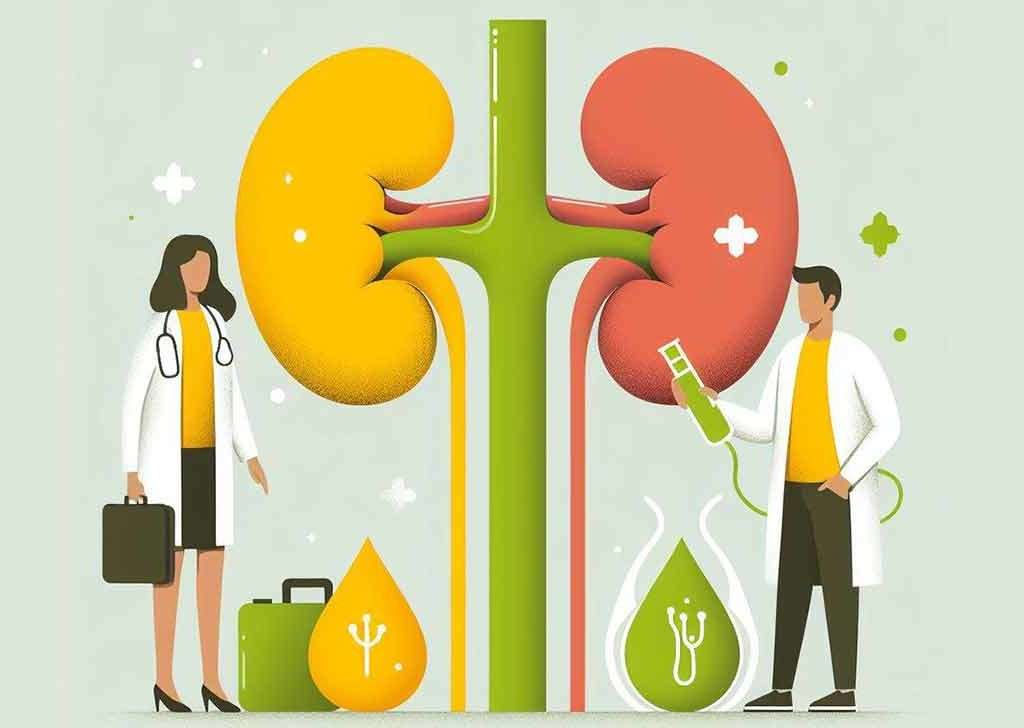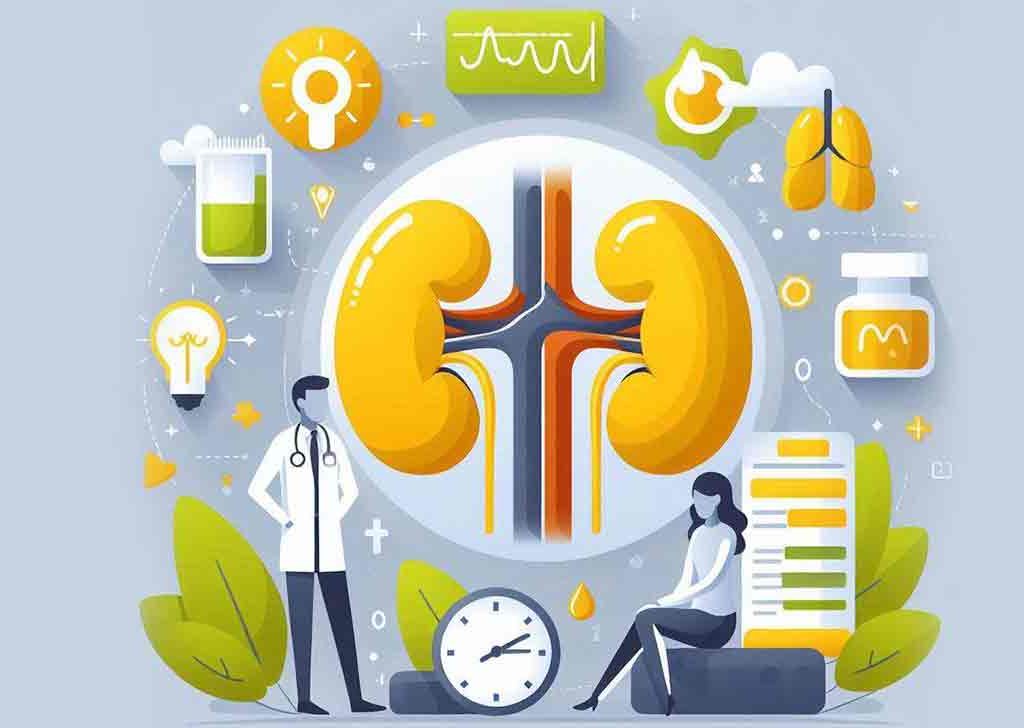Here’s a detailed overview of Crohn’s Disease, including its definition, symptoms, causes, diagnosis, treatment, and management strategies.
Crohn’s Disease: Overview
Crohn’s disease is a chronic inflammatory bowel disease (IBD) that causes inflammation of the gastrointestinal (GI) tract. It can affect any part of the GI tract, from the mouth to the anus, but commonly affects the end of the small intestine (ileum) and the beginning of the large intestine (colon).
Symptoms
The symptoms of Crohn’s disease can vary based on the severity and location of the inflammation. Common symptoms include:
- Abdominal Pain: Often crampy and can occur in various parts of the abdomen.
- Diarrhea: Frequent, loose, or watery stools, sometimes with blood or mucus.
- Fatigue: A general feeling of tiredness or lack of energy.
- Weight Loss: Unintentional weight loss due to malnutrition or loss of appetite.
- Reduced Appetite: Often a result of abdominal pain or discomfort.
- Fever: Low-grade fevers can occur during flare-ups.
- Anemia: Due to blood loss or malnutrition.
Causes
The exact cause of Crohn’s disease is unknown, but several factors are believed to contribute to its development:
- Genetics: A family history of IBD can increase the risk of developing Crohn’s.
- Immune System: An abnormal immune response may attack the GI tract, leading to inflammation.
- Environmental Factors: Certain environmental factors, such as diet, pollution, and smoking, may trigger or worsen symptoms.
- Microbiome: Imbalances in gut bacteria may also play a role in the disease.
Diagnosis
Diagnosing Crohn’s disease typically involves several steps:
- Medical History: A thorough review of symptoms, family history, and medical background.
- Physical Examination: Checking for signs of abdominal tenderness, swelling, or other complications.
- Blood Tests: To check for anemia, infection, or inflammation markers.
- Stool Tests: To rule out infections and check for blood.
- Imaging Tests: Such as X-rays, CT scans, or MRIs to visualize the GI tract.
- Endoscopy: A colonoscopy or upper endoscopy allows direct visualization of the intestines and the ability to take biopsies.
Treatment
While there is no cure for Crohn’s disease, treatments focus on reducing inflammation, managing symptoms, and achieving remission. Treatment options include:
- Medications:
- Anti-inflammatory Drugs: Such as corticosteroids (prednisone) and aminosalicylates (mesalamine).
- Immunosuppressants: Such as azathioprine and methotrexate to reduce the immune response.
- Biologics: Targeted therapies like infliximab (Remicade) and adalimumab (Humira) that inhibit specific pathways in the inflammatory process.
- Antibiotics: To treat infections and complications.
- Nutritional Support:
- Special diets or supplements may help manage symptoms and provide essential nutrients.
- In some cases, a temporary feeding tube or intravenous nutrition may be necessary.
- Surgery:
- In severe cases or when complications arise (like strictures or abscesses), surgery may be needed to remove damaged sections of the intestines.
Management Strategies
Effective management of Crohn’s disease involves:
- Regular Check-Ups: Regular monitoring by a healthcare provider to manage symptoms and adjust treatment as necessary.
- Dietary Modifications: Identifying trigger foods and maintaining a balanced diet to reduce symptoms.
- Stress Management: Techniques such as yoga, meditation, or counseling to cope with the emotional stress of chronic illness.
- Support Groups: Connecting with others who have Crohn’s disease can provide emotional support and practical advice.
Conclusion
Crohn’s disease is a complex and chronic condition that requires a comprehensive management approach. Early diagnosis and effective treatment can significantly improve the quality of life for those affected. If you suspect you have Crohn’s disease or are experiencing related symptoms, consult a healthcare professional for appropriate evaluation and care.
Additional Resources
For more information about Crohn’s disease, consider visiting reputable organizations like:
If you need further details on specific aspects of Crohn’s disease or have other questions, feel free to ask!
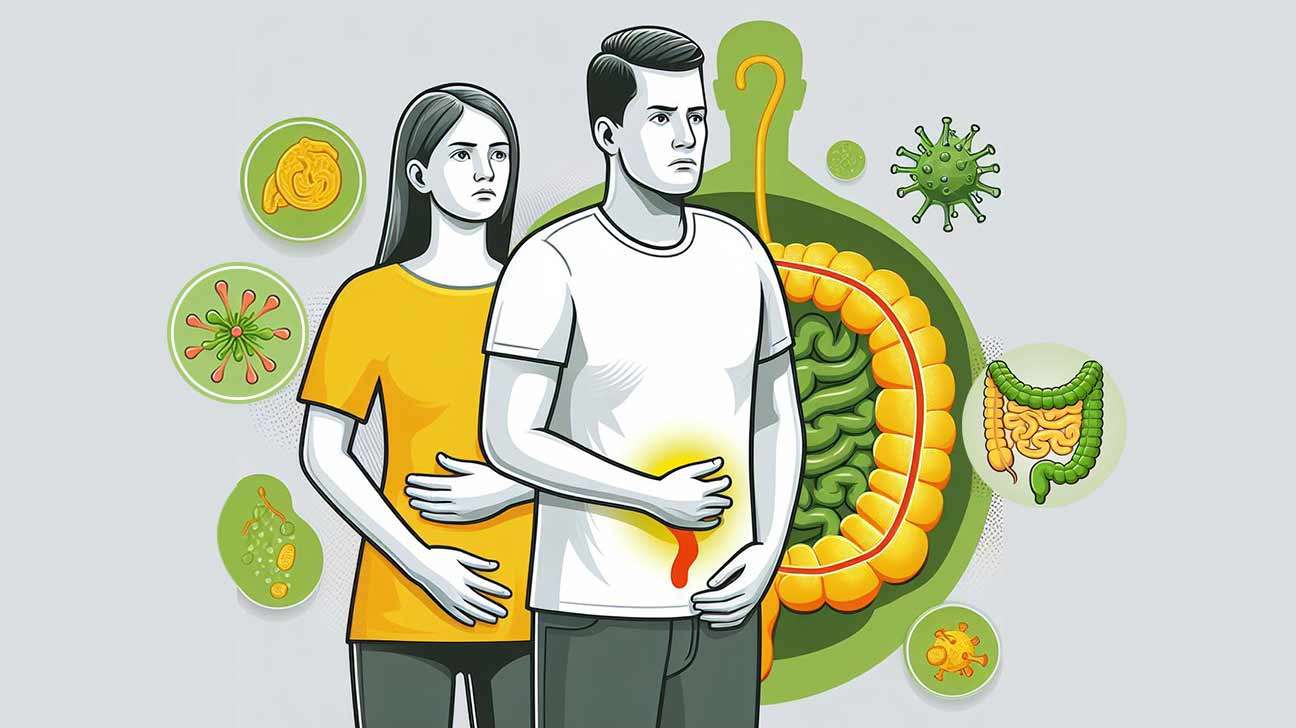
Crohn’s Disease Symptoms | Types | Risk Factors | Treatment | Medication | Surgery | Diet
Crohn’s disease is a chronic inflammatory bowel disease (IBD) that can affect any part of the gastrointestinal (GI) tract, from the mouth to the anus. It is characterized by inflammation of the digestive tract lining, leading to a variety of symptoms. The exact cause of Crohn’s disease is not well understood, but it is believed to involve a combination of genetic, environmental, and immune system factors.
Crohn’s Disease Symptoms
Crohn’s disease is a chronic inflammatory bowel disease that can affect any part of the gastrointestinal (GI) tract, from the mouth to the anus. Symptoms can vary widely among individuals, and they may come and go. Common symptoms of Crohn’s disease include:
- Abdominal pain and cramping: Persistent or intermittent pain in the abdominal area, often in the lower right side.
- Diarrhea: Chronic diarrhea is a common symptom, which may be accompanied by urgency to have a bowel movement.
- Weight loss: Due to reduced appetite, malabsorption of nutrients, and the chronic inflammatory nature of the disease.
- Fatigue: Chronic inflammation and nutrient deficiencies can contribute to fatigue and a general sense of weakness.
- Fever: Some people with Crohn’s disease may experience low-grade fevers, especially during flare-ups.
- Bloody stools: Inflammation in the GI tract can lead to bleeding, resulting in blood in the stool.
- Loss of appetite: Reduced appetite and a sense of fullness, often due to inflammation and discomfort.
- Perianal symptoms: Inflammation can affect the area around the anus, leading to fistulas (abnormal connections between organs or tissues), abscesses, or skin tags.
- Joint pain: Inflammatory arthritis may occur in some individuals with Crohn’s disease, causing pain and swelling in the joints.
- Eye inflammation: Some people may experience redness, pain, or blurred vision due to inflammation in the eyes (uveitis).
It’s important to note that the severity and combination of symptoms can vary, and individuals may experience periods of remission with minimal or no symptoms. If you suspect you have Crohn’s disease or are experiencing any of these symptoms, it’s crucial to consult with a healthcare professional for proper diagnosis and management. Crohn’s disease is a chronic condition, and treatment may involve medications, lifestyle changes, and, in some cases, surgery.
Different Types of Crohn’s Disease
Crohn’s disease can affect any part of the gastrointestinal (GI) tract and is typically classified based on the location and characteristics of inflammation. There are several types of Crohn’s disease, and the classification system helps healthcare professionals understand the extent and nature of the disease. The main types include:
- Ileocolitis: This is the most common type of Crohn’s disease, affecting the ileum (the last part of the small intestine) and the colon (large intestine). Symptoms may include abdominal pain, diarrhea, and weight loss.
- Ileitis: In this type, only the ileum is affected. Symptoms are similar to ileocolitis and may include abdominal pain and diarrhea.
- Jejunoileitis: This type involves inflammation in the jejunum (the upper part of the small intestine) and sometimes the ileum. Symptoms can include abdominal pain and cramping, as well as malabsorption of nutrients.
- Gastroduodenal Crohn’s disease: This type affects the stomach and the duodenum (the first part of the small intestine). Symptoms may include nausea, vomiting, and weight loss.
- Crohn’s colitis: In this type, inflammation is limited to the colon. Symptoms may include diarrhea, rectal bleeding, and the urgency to have a bowel movement.
- Perianal Crohn’s disease: This involves inflammation around the anus and may lead to the formation of abscesses, fistulas, or skin tags. Symptoms can include pain and drainage.
- Granulomatous Colitis: This is a rare type of Crohn’s disease characterized by the presence of granulomas, which are small clusters of immune cells. It primarily affects the colon and may have symptoms similar to Crohn’s colitis.
It’s important to note that individuals with Crohn’s disease may experience a combination of these types, and the disease can change over time. The classification helps guide treatment decisions and allows healthcare professionals to tailor management strategies based on the specific characteristics of the disease in each individual. Treatment approaches may include medications, lifestyle modifications, and, in some cases, surgery.
Risk Factors of Crohn’s Disease
The exact cause of Crohn’s disease is not well understood, but it is believed to involve a combination of genetic, environmental, and immune system factors. Several risk factors may increase the likelihood of developing Crohn’s disease:
Genetics:
Family history plays a significant role in Crohn’s disease. Individuals with a first-degree relative (parent, sibling, or child) with the condition have a higher risk of developing it themselves. Multiple genes have been associated with Crohn’s disease, but it’s a complex interplay of genetic factors.
Age:
While Crohn’s disease can occur at any age, it is most commonly diagnosed in people between the ages of 15 and 35. However, it can also develop in children and older adults.
Ethnicity:
Crohn’s disease has been reported more frequently in individuals of Ashkenazi Jewish descent. However, it can affect people of any ethnic background.
Smoking:
Smoking is a significant risk factor for Crohn’s disease, particularly for developing the ileal (the last part of the small intestine) and upper gastrointestinal tract involvement. Moreover, smoking is known to worsen the course of the disease and reduce the effectiveness of certain treatments.
Geography:
Crohn’s disease is more prevalent in developed countries and urban areas. Westernized lifestyles and diets have been suggested as potential contributing factors.
Immune system dysfunction:
Crohn’s disease is characterized by an abnormal immune response in the gastrointestinal tract. Issues with the immune system may contribute to the inflammation seen in Crohn’s disease.
Previous infections:
Some researchers believe that certain bacterial or viral infections may trigger an abnormal immune response, leading to the development of Crohn’s disease in susceptible individuals.
Environmental factors:
Factors such as diet, exposure to certain medications (such as nonsteroidal anti-inflammatory drugs or antibiotics), and a high-sugar, low-fiber diet have been studied as potential environmental contributors to Crohn’s disease.

Treatment
The treatment of Crohn’s disease aims to reduce inflammation, manage symptoms, and promote long-term remission. The approach to treatment can vary depending on the severity of the disease, the specific symptoms, and the individual’s response to different therapies. Here are common components of Crohn’s disease treatment:
Medications:
- Anti-inflammatory drugs: Aminosalicylates (such as mesalamine) can help control mild to moderate inflammation in the digestive tract.
- Corticosteroids: These may be used to quickly reduce inflammation during flare-ups, but they are not suitable for long-term use due to potential side effects.
- Immunomodulators: Drugs like azathioprine, 6-mercaptopurine, and methotrexate can help suppress the immune system to control inflammation.
- Biologics: Monoclonal antibodies, such as infliximab, adalimumab, and vedolizumab, target specific pathways involved in inflammation and are often used for moderate to severe cases.
- JAK inhibitors: Tofacitinib is an example of a Janus kinase (JAK) inhibitor that may be used in certain cases.
Nutritional therapy:
Some individuals may benefit from exclusive enteral nutrition (EEN), which involves consuming a liquid diet for a specified period. This approach is often used in children and can promote mucosal healing.
Surgery:
In cases where medications are ineffective or complications arise, surgery may be necessary. Common procedures include the removal of damaged portions of the digestive tract or the creation of an ostomy.
Lifestyle modifications:
- Dietary changes, such as avoiding trigger foods, may help manage symptoms. Maintaining a well-balanced and nutritious diet is important.
- Smoking cessation is crucial, as smoking has been linked to worsening Crohn’s disease.
Symptom management:
- Medications may be prescribed to alleviate specific symptoms, such as anti-diarrheal drugs or pain relievers.
- Managing stress and getting adequate sleep can also contribute to overall well-being.
Monitoring and follow-up:
Regular monitoring of the disease’s activity through medical tests, such as endoscopy and imaging studies, helps guide treatment adjustments.
Medication
The medication used to treat Crohn’s disease depends on the severity of the condition, the location of inflammation in the digestive tract, and individual response to different drugs. Here are some common classes of medications used in the management of Crohn’s disease:
Aminosalicylates:
- Examples: Mesalamine, sulfasalazine.
- Used for mild to moderate inflammation, primarily in the colon.
Corticosteroids:
- Examples: Prednisone, budesonide.
- Effective for short-term relief during flare-ups but not suitable for long-term use due to side effects.
Immunomodulators:
- Examples: Azathioprine, 6-mercaptopurine, methotrexate.
- Suppress the immune system to reduce inflammation and maintain remission.
Biologics:
- Examples: Infliximab, adalimumab, vedolizumab, ustekinumab.
- Monoclonal antibodies that target specific proteins involved in the inflammatory process. Used for moderate to severe cases.
Janus Kinase (JAK) Inhibitors:
- Example: Tofacitinib.
- Works by inhibiting JAK enzymes involved in the immune response. Used in certain cases, especially when other treatments are ineffective.
Antibiotics:
- Examples: Ciprofloxacin, metronidazole.
- Prescribed for complications like fistulas or abscesses, as well as to reduce bacterial overgrowth.
Enteral Nutrition:
Exclusive enteral nutrition (EEN) involves consuming a liquid formula as the sole source of nutrition for a specified period. This approach is often used in children and can help induce remission.
surgery
Surgery for Crohn’s disease is typically considered when medical treatments are unable to control symptoms, or when complications such as strictures, fistulas, abscesses, or bowel obstructions occur. Surgery is not a cure for Crohn’s disease, but it can help alleviate symptoms, manage complications, and improve overall quality of life. Here are common types of surgeries performed for Crohn’s disease
Strictureplasty:
This procedure is used to widen narrowed areas of the intestine (strictures) without removing any part of the bowel. It is often employed when the disease involves multiple areas of the small intestine.
Resection:
In cases where a specific segment of the intestine is severely affected, the diseased portion may be removed, and the healthy ends are then rejoined (anastomosis). This can help with symptom relief and prevent complications.
Colectomy:
Removal of the entire colon may be necessary in cases where the disease primarily affects the large intestine. This procedure may result in the creation of an ileostomy or an ileal pouch-anal anastomosis (IPAA), where a pouch is created from the end of the small intestine, and it is connected to the anus.
Proctocolectomy:
In severe cases involving the rectum, a proctocolectomy may be performed, which involves the removal of both the colon and rectum. This procedure often leads to the creation of an ileostomy or an IPAA.
Perianal Surgery:
Surgical procedures may be needed to address complications in the perianal area, such as fistulas or abscesses. These procedures can involve drainage, seton placement, or, in some cases, surgical repair.
It’s important to note that surgery is usually reserved for specific situations when other treatments are not effective. Additionally, the decision to undergo surgery is a collaborative one between the patient and their healthcare team, considering factors such as the extent and severity of the disease, the individual’s overall health, and the potential benefits and risks of the surgery.
After surgery, ongoing medical management is often necessary to prevent recurrence of symptoms or complications. Regular follow-up with a healthcare provider is crucial to monitor the disease, manage symptoms, and adjust the treatment plan as needed.
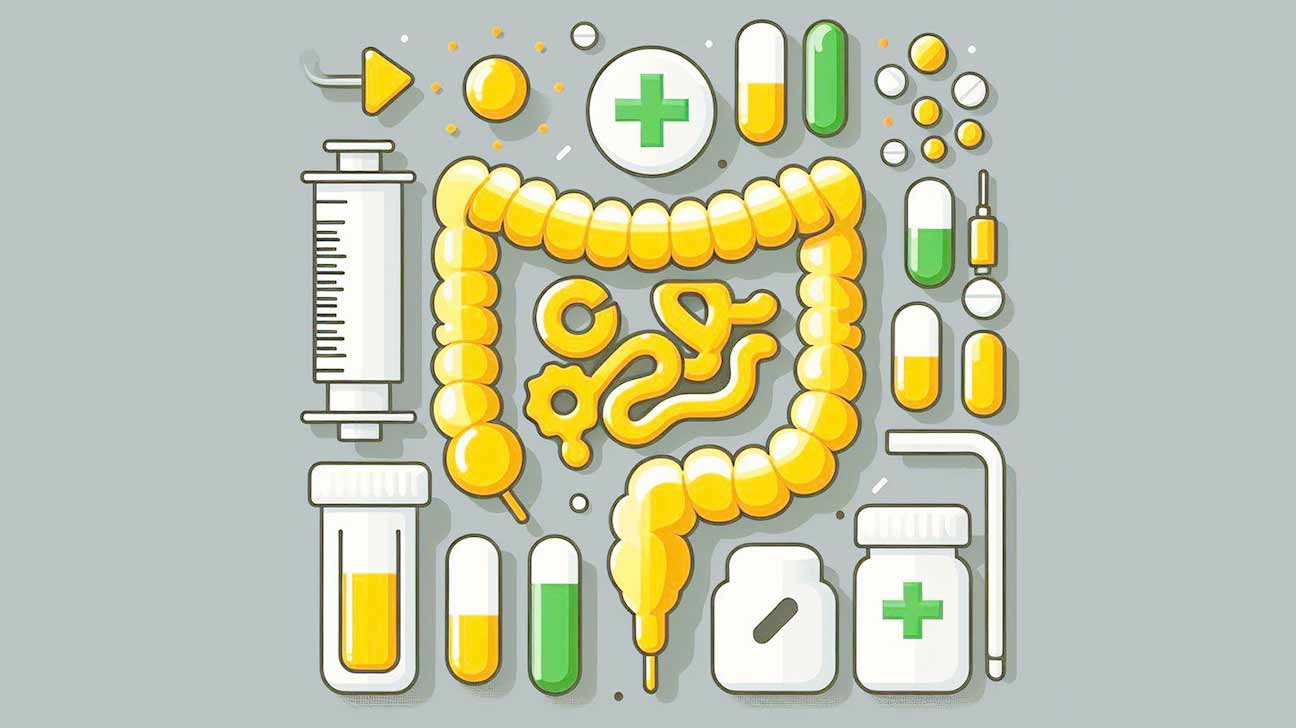
Diet of Crohn’s Disease
Diet can play a significant role in managing Crohn’s disease symptoms, but it’s important to note that there is no one-size-fits-all approach. Dietary recommendations may vary based on individual tolerance and the specific characteristics of the disease. Here are some general guidelines and considerations for managing Crohn’s disease through diet:
Maintain a Balanced Diet:
Aim for a well-balanced diet that includes a variety of foods from all food groups. This helps ensure that you receive essential nutrients and maintain overall health.
Identify Trigger Foods:
Pay attention to your body’s response to different foods and identify any specific triggers that worsen your symptoms. Common triggers include dairy products, high-fiber foods, spicy foods, and certain raw fruits and vegetables.
Low-Residue Diet:
When symptoms are especially severe or there are flare-ups, a low-residue or low-fiber diet could be advised. This involves avoiding foods high in fiber, such as whole grains, nuts, seeds, and raw fruits and vegetables.
Lactose Intolerance:
Many individuals with Crohn’s disease may be lactose intolerant. If so, limit or avoid dairy products or consider lactose-free alternatives.
Small, Frequent Meals:
Eating smaller, more frequent meals throughout the day may be easier on the digestive system than large meals.
Hydration:
Stay well-hydrated, as dehydration can be a concern, especially during diarrhea episodes. Water, herbal teas, and clear broths are good choices.
Supplements:
To treat dietary deficits, it may occasionally be advised to take nutritional supplements. This could include vitamins, minerals, or protein supplements.
Avoid Caffeine and Alcohol:
Caffeine and alcohol can be irritating to the digestive tract. Limiting or avoiding these substances may help reduce symptoms.
Consider a Food Diary:
Keeping a food diary can help you track your diet and identify patterns between your eating habits and symptoms. This can be useful when working with a healthcare professional or dietitian.
Consult a Dietitian:
Working with a registered dietitian experienced in managing inflammatory bowel diseases can provide personalized guidance and support. They can help create a customized diet plan based on your specific needs and tolerances.
It’s important to note that while diet can be a helpful aspect of managing Crohn’s disease, it is not a replacement for medical treatment. Always consult with your healthcare team, including a gastroenterologist and dietitian, to create a comprehensive management plan tailored to your individual needs and the characteristics of your Crohn’s disease.
How is Crohn’s Disease Diagnosed?
Diagnosing Crohn’s disease typically involves a combination of clinical evaluation, imaging studies, laboratory tests, and, in some cases, endoscopic procedures. The common steps involved in the diagnostic process:
Medical History and Physical Examination:
Your healthcare provider will start by taking a detailed medical history, asking about your symptoms, family history of inflammatory bowel disease, and overall health.
Blood Tests:
Blood tests may be performed to check for signs of inflammation, anemia, and nutritional deficiencies. Elevated levels of certain markers, such as C-reactive protein (CRP) or erythrocyte sedimentation rate (ESR), may suggest inflammation in the body.
Stool Tests:
Samples of stool can be examined to rule out parasites or infections as additional reasons of gastrointestinal discomfort.
Imaging Studies:
Various imaging tests can help visualize the digestive tract and identify signs of inflammation. Common imaging studies include:
- Colonoscopy: A flexible tube with a camera is inserted through the rectum to examine the entire colon and sometimes the terminal ileum (the last part of the small intestine).
- Upper Endoscopy: A scope is used to examine the upper part of the gastrointestinal tract, including the esophagus, stomach, and the beginning of the small intestine.
- Capsule Endoscopy: A small, swallowable capsule with a camera takes pictures of the small intestine as it passes through.
Biopsy:
During endoscopic procedures, the healthcare provider may take small tissue samples (biopsies) from the lining of the digestive tract. These samples can help confirm the diagnosis and determine the severity of inflammation.
CT Scan or MRI:
It is possible to determine the degree of inflammation and spot problems like abscesses or fistulas by using cross-sectional imaging techniques, such as computed tomography (CT) scans or magnetic resonance imaging (MRI).
Double-Contrast Barium Enema:
This is a type of X-ray that involves filling the colon with a contrast material to provide detailed images of the colon and rectum.
Small Bowel Follow-Through:
This involves swallowing a contrast material that helps visualize the small intestine during X-rays.
Diagnosis of Crohn’s disease may take time and often involves ruling out other potential causes of gastrointestinal symptoms. Additionally, the disease can have a variable presentation, and individual cases may differ.
Life Expectancy
Crohn’s disease itself does not typically affect life expectancy, and many individuals with the condition lead full and productive lives. However, it’s important to note that Crohn’s disease is a chronic condition, and its course can vary widely among individuals. Factors such as the severity of inflammation, the extent of involvement in the digestive tract, the presence of complications, and the response to treatment can influence the long-term outlook.
While Crohn’s disease does not directly affect life expectancy, certain complications or associated conditions may have an impact. For example:
- Complications: In severe cases or if complications arise (such as strictures, fistulas, or abscesses), surgical interventions may be necessary. Surgery itself carries some risks, and the long-term impact on overall health can vary.
- Malnutrition and Nutrient Deficiencies: Chronic inflammation in the digestive tract can lead to malabsorption of nutrients, potentially resulting in malnutrition. Addressing nutritional deficiencies is an important aspect of managing Crohn’s disease.
- Medication Side Effects: Some medications used to manage Crohn’s disease, especially immunosuppressants and biologics, may have side effects. Regular monitoring and management of side effects are essential.
- Impact on Mental Health: Living with a chronic condition like Crohn’s disease can have emotional and psychological effects. Managing stress, anxiety, and depression is crucial for overall well-being.
It’s important for individuals with Crohn’s disease to work closely with their healthcare team to monitor the disease, manage symptoms, and address any potential complications. Regular medical check-ups, appropriate medications, and lifestyle modifications can contribute to maintaining a good quality of life.
It’s also worth noting that ongoing research and advancements in the understanding and treatment of Crohn’s disease continue to improve outcomes for individuals with the condition.

